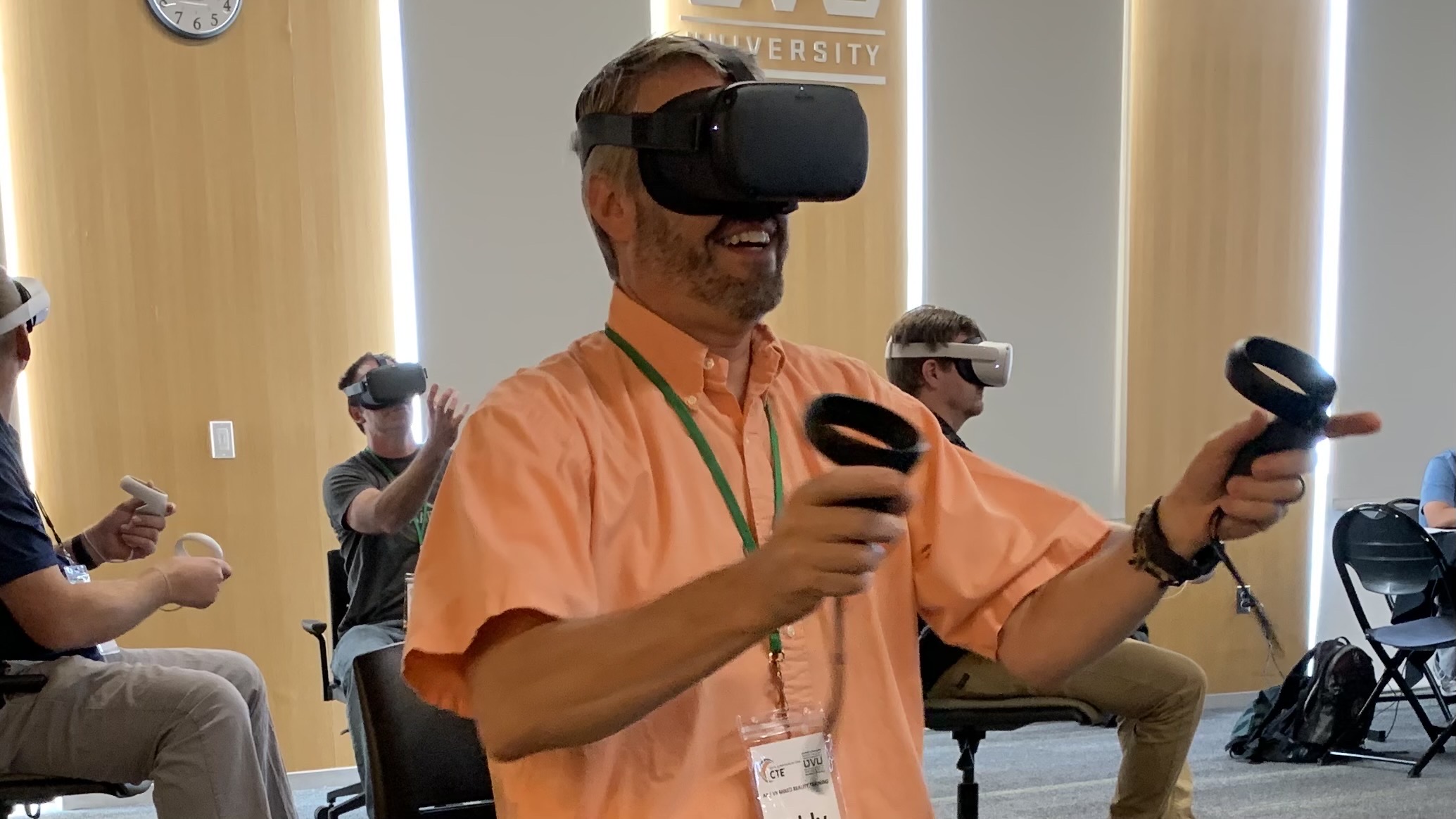Technology teachers from across the state gathered at Utah Valley University in September to fly, slash, shoot, and climb using virtual reality (VR) as part of a conference on the educational uses of VR in Utah classrooms.

Technology teachers from across the state gathered at Utah Valley University (UVU) in September to fly, slash, shoot, and climb using virtual reality (VR) as part of a conference on the educational uses of VR in Utah classrooms.
The conference was hosted by UVU’s Department of Digital Media (DGM), including faculty members Michael Harper and Kristina Yamada. DGM students Mariah Foerster and Sam Louder were on hand to help conference attendees learn to operate UVU’s VR equipment, including headsets like the Oculus Quest 2 and the Microsoft HoloLens.
“We want to start bringing people together, bridging between college and our secondary institutions, to help bring virtual reality, augmented reality, and mixed reality technologies into the classroom,” Harper said.
After the teachers in attendance got hands-on experience with the VR tech, they were able to ask questions about the logistics, practicality, and value of using virtual reality as part of the educational process.
Harper said a big goal of the conference was to give teachers a vision of what’s possible because this technology, especially augmented reality, is expected to explode in the coming years.
“Every classroom is different. There isn’t an actual virtual reality curriculum out there yet,” Harper said. “We’re providing teachers resources and allowing them to have interactions with one another, networking, and support. When we do events like this, they come together and get ideas about where they want to take it.”
In addition to a large variety of virtual reality devices, UVU features an Advanced Digital Media Sandbox, available for digital media students at the sophomore level and above to work on projects. Digital media students can check out video games, gaming consoles, and audio and video materials for research purposes.
Foerster, a junior at UVU, said this technology is a vital resource for her work studying user experience design, and that younger students will have a leg up by developing familiarity with it early, along with its various classroom applications.
“We’re introducing teachers to virtual reality to help them integrate it into their classrooms, so students can have a better experience and prepare them for the world of technology,” Foerster said. “You can travel to new places that teachers talk about in class without ever having to leave. Then there’s the physics lab to help illustrate how physics works in real life without having to physically set up the experiment. This is a tool we’re able to use in so many different ways.”